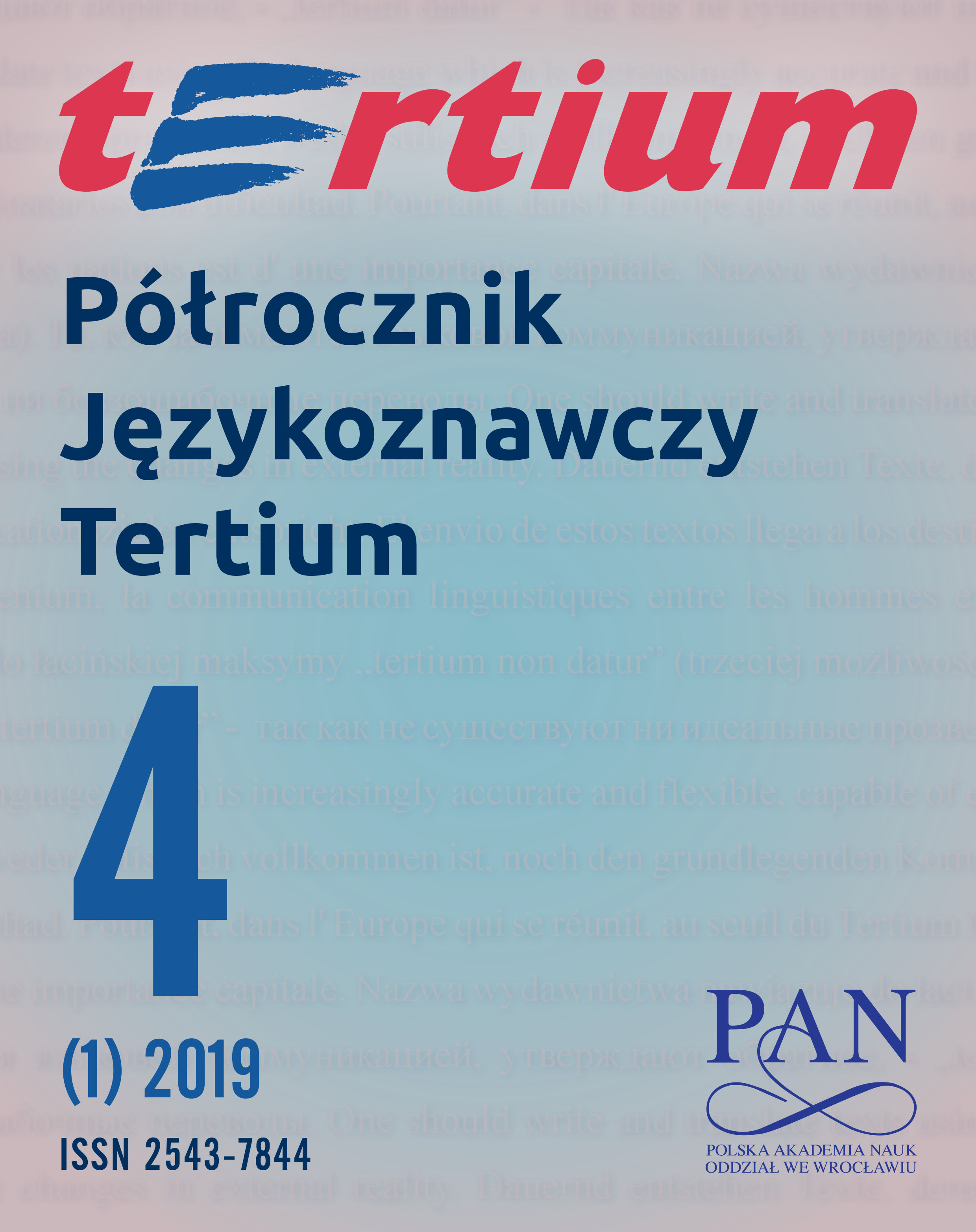Abstrakt
In my earlier papers (Szwedek 2018 and 2019), I refuted the almost universal view (e.g. Clausner, Croft 1999), that the image schema cannot be defined. I first proposed to follow Grady’s (2005) general recommendation that the image schemas which would be “too general to be associated with any particular type of perceptual experience, or too rich to count as fundamental dimensions of perceptual representation” (2005: 35) should be ruled out. I argued (Szwedek 2018) that the fundamental perception is that of density experienced only by touch and the only entities whose density is experienced by touch are physical objects. Following Johnson 1987 and Langacker 1987, I proposed that the only independent entities in this world are physical objects with innumerable relations among them. I argued that if there are conceptually dependent relations, they must be relations between or among independent entities. I then concluded that the only conceptually independent object schemas constitute the basis of the formulation of a definition of the image schema and against all the pessimistic views he proposed the following definition: “The IMAGE SCHEMA is a mental structure with at least one OBJECT image schema, which is a conceptually independent entity representing a physical object whose fundamental property is density experienceable by touch, with ensuing boundedness, shape, size, etc.” (Szwedek, 2019: 20). While my 2018 paper discusses simple image schemas, the present paper shows, on the example of ENABLEMENT, that they can also form complexes expressed by one wordBibliografia
Clausner, Timothy, William Croft (1999) “Domains and Image Schemas.” Cognitive Linguistics 10; 1‒31.
Grady, Joseph (2005) “Image Schemas and Perception: Refining a Definition.” [In:] Beate Hampe (ed.) From Perception to Meaning: Image Schemas in Cognitive Linguistics. 35 ‒ 55. Berlin New York: Mouton de Gruyter.
Hampe Beate (ed.) (2005). From Perception to Meaning: Image Schemas in Cognitive Linguistics. Berlin New York: Mouton de Gruyter.
Johnson, Mark (1987) The Body in the Mind. The Bodily Basis of Meaning, Imagination, and Reason. Chicago: Chicago University Press.
Lakoff, George, Mark Turner (1989) More than Cool Reason. A Field Guide to Poetic Metaphor. Chicago and London: The University of Chicago Press.
Langacker, Ronald (1987) Foundations of Cognitive Grammar. Vol. I: Theoretical Prerequisites. Stanford, CA: Stanford University Press.
Langacker, Ronald (1990). “Subjectification”. Cognitive Linguistics 1(1); 5‒38.
Langacker, Ronald (2008) Cognitive Grammar. A Basic Introduction. Oxford: Oxford University Press.
Oakley, Todd (2007) “Image Schemas.” [In:] Dirk Geeraerts, Hubert Cuyckens (eds.), The Oxford Handbook of Cognitive Linguistics. Oxford: Oxford University Press. 214‒235.
Peña, Sandra (1999) “Subsidiary Relationships between Image-schemas: An Approach to the Force Schema.” Journal of English Studies 1; 187‒ 207.
Szwedek, Aleksander (2000) “Senses, Perception and Metaphors (of OBJECT and OBJECTIFICATION).” [In:] Stanisław Puppel, Katarzyna Dziubalska–Kołaczyk. (eds.). Multis Vocibus de Lingua. Poznań: Dziekan Wydziału Neofilologii Uniwersytetu im. Adama Mickiewicza. 143‒ 153.
Szwedek, Aleksander (2011) “The Ultimate Source Domain.” Review of Cognitive Linguistics 9: 2; 341‒ 366.
Szwedek, Aleksander (2018) “The OBJECT Image Schema.” [In:] Przemysław Żywiczyński, Marta Sibierska, Waldemar Skrzypczak (eds.). Beyond Diversity: The Past and the Future of English Studies. 57‒89. Berlin: Peter Lang.
Szwedek, Aleksander (2019) “The Image Schema: A Definition.” Styles of Communication. 11 (1); 9‒30.
Licencja Uznanie Autorstwa- Użycie niekomercyjne-Bez utworów zależnych (CC BY-NC-ND). Autorzy zachowują prawa autorskie do swoich publikacji.

